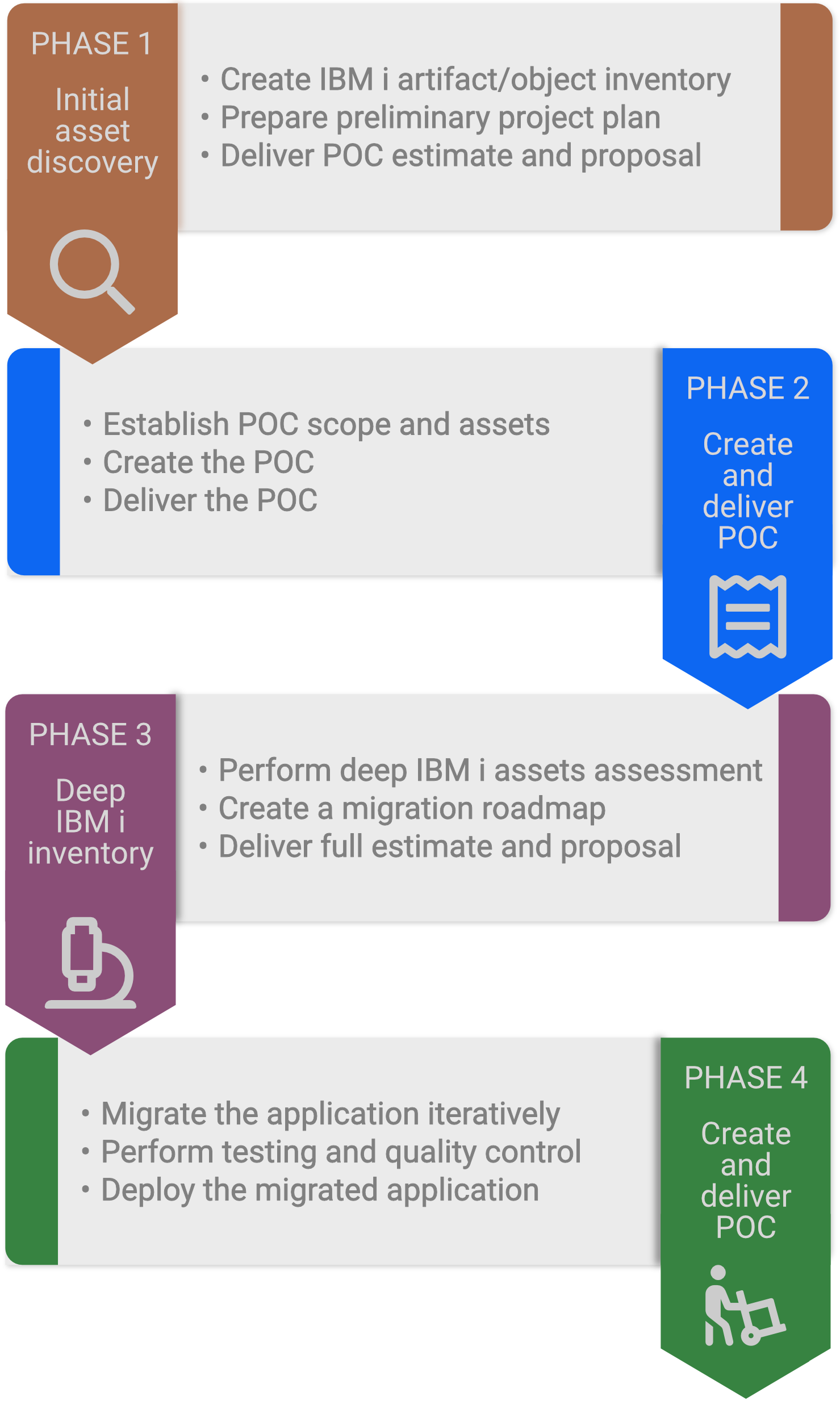Making decisions about your mission critical RPG applications is exceedingly challenging. However, those who commit to making these decisions before crisis-mode sets in will be far better off than those who wait until the last minute.
With a broad sense of your RPG challenge, start laying the groundwork now for charting your business’s RPG future-proofing plan. Even if your shop may be one of the lucky ones with a younger RPG team, challenging decisions lurk and it’s not too early to start understanding and preparing for them.
Start today accessing your critical technical and personnel exposures with your team (taking care to heed some of the points in this article. You may have few team members for whom discussing retirement is awkward and uncomfortable. Swallow hard and have those discussions. Those discussions are critical to your business persistence plan.
Think broad and deep
RPG applications don’t live in a vacuum. They live in an ecosystem composed of custom non-RPG code, third-party applications, and additional hardware. Other facilities such as job scheduling, bar-code scanning, Web servers, EDI processing, and business partner integrations need to be considered.
Do a deep dive into all of your critical technical dependencies. You need to understand exactly where these kinds of things overlap with your existing RPG applications and workflows. Transforming your RPG application means transforming these stacks as well.
Transform more than just your RPG applications
While addressing your RPG dependence is a tough, challenging thing to do, it’s also an opportunity. Over the years, in the effort to answer rapidly increasing business demands on a 20 or 30 year-old system, many IBM i shops have added many complex technical layers atop their RPG applications. These layers often quickly prove to be brittle and unstable systems (One IBM i manager recently told us his organization’s large IBM i installation was “built on a house of cards.“)
Assessing how to transform your RPG application also gives you the chance to assess how to improve years of brittle, tacked-on layers. Migrating your RPG applications to .NET and C# offers a full-stack platform that paves the way for long-term persistence of your RPG applications-and provides a much better alternative than band-aid fixes.
Migrating RPG is more than just converting source code
Transforming a decades-old RPG application with hundreds of thousands of lines of code is a big job. However, the actual process of mechanically converting RPG to another language is actually pretty direct. The real challenge is transforming that RPG to something that can gracefully deal not just with the RPG but with IBM i/RPG idioms. RPG programs dependencies are idioms such as:
QTEMP
Program call
Activation groups
Data areas
Data queues
File overrides and file members
Library list
Output/Job queues
These, and many others, are all areas of your RPG that are easy to take for granted until it comes time to replace them. As you consider the future for your RPG source code, these idioms must be accounted for.
We mentioned in this article that when you discuss the future of your RPG application with your PC programming teams that one of the first things they’ll want to do is rewrite the app themselves. Dependence on IBM i/RPG idioms like these are one of the reasons those efforts fail so quickly.
Get help!
ASNA has specialized in IBM i application migration for more than 15 years and can help you with every aspect of migration. Our process-driven methodology helps discover not just RPG issues, but also reveals other application exposures before migration even starts.
A primary hallmark of a successful migration is no surprises . You don’t want to be deep into a migration to all of sudden realize that you don’t have the source code for a critical module. We feel strongly that an application migration should not begin until all of the potential roadblocks and unknowns are discovered and resolved.
Before we attempt to migrate any code we perform deep analytics on your code base to understand its dependencies, identify areas in the code that might be remediation, and many other metrics. This information enables us to fully understand your application and its scope.

Our four-phase migration methodology, outlined above in Figure 1, drives the application migration. Our goals are:
Delivering a migrated application that works with high-fidelity to the original.
Avoiding surprises. Our careful pre-migration analysis of your application exposes all potential hot-spots in the code that need special attention.
Adhere to both the time and dollars budget.
Just the facts
The decisions about the persistence of your mission critical RPG applications are among the most important decisions you’ll ever make for your business. We’ve presented many facts and more than a few opinions in the articles on this site. You may agree or disagree with our opinions.
The decision you make to persist of your mission critical RPG applications is also the decision to persist your business
For the time being, though, let’s put opinions aside. Let’s consider three irrefutable facts:
Most IBM i shops have a deep dependence on RPG programs and programmers.
Without these RPG applications, most businesses lose (or at least dramatically impede) their ability to deliver unique business value to customers and business partners.
Most RPG programmers will be pushing 80 years old by 2030.
The question isn't if you will ever face making critical decisions about your RPG applications, it's when
Contact ASNA today to start creating your defense against the IBM i’s decade of crisis.






